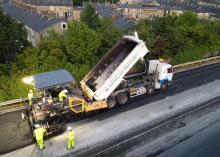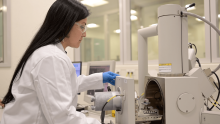
The bricks were installed in the rotary cement kiln at LafargeHolcim's Mannersdorf, Austria plant in February, followed by further installations at other LafargeHolcim plants in Austria and Switzerland to minimise waste and maximise use of recycled material.
RHI Magnesita says the low carbon level in the bricks is mainly achieved by using secondary recycled materials from rotary cement kilns. These were previously considered unsuitable for further use in the production process of magnesite bricks, because in most cases they contain a high amount of infiltrated salts which have a negative effect on the properties of the bricks.
Austria-based RHI Magnesita says its research team has now revolutionised the technical methods for reusing the recycled materials, meaning the company can now actively support its customers in the cement industry in reducing emissions during production processes.
RHI Magnesita provides refractory products for industries including cement and steel.
“After successful trials and production of our sustainable technology, RHI Magnesita is now ready for the market launch of the ANKRAL LC series,” said Heinz Telser, head of technical marketing & innovation at RHI Magnesita.
“We are very proud and grateful for this successful cooperation between LafargeHolcim and RHI Magnesita in these pilot projects,” added Dr. Christopher Ehrenberg, plant manager of Lafarge Zementwerk Mannersdorf. “Together we want to continue on our path towards sustainability in order to reduce CO2 emissions throughout the supply chain."










